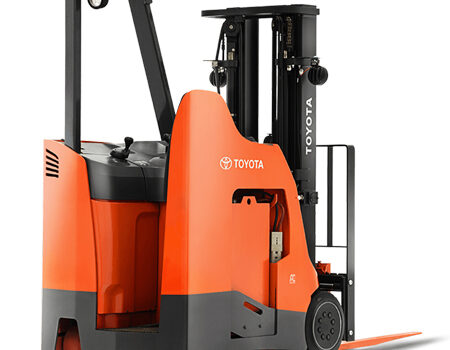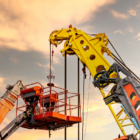Is Your Worksite in Compliance with OSHA’s Fall Protection Standard?
Workers can sustain severe injuries while working at heights. OSHA regulations and the requirement for fall protection would seem to be decreasing the number of fatalities, injuries, and falls in this most dangerous industry. OSHA reported that the number of falls has increased over the past few years. Many fall protection systems don’t work properly or workers aren’t properly trained to use them. Employers must follow the Fall Protection Regulations Occupational Safety and Health Administration (OSHA). These regulations were created to prevent workers from falling from heights greater than 6 feet from a working or walking surface. Professional fall protection training and forklift training in Toronto can help you avoid accidents and injuries at the workplace.
OSHA Basic Rule
Let’s begin with the basics before we get into the finer details of OSHA standards. Every construction professional must remember one rule when it comes to fall prevention and protection: Employees should be able to assess and address fall hazards before they can perform any job that could lead them to fall from heights.
OSHA’s fall protection standards require that the general industry offer protection services to their employers if the height exceeds 4ft. Employers must offer protection services to construction companies if the height is greater than 6ft.
No Minimum Height Rule
OSHA’s No minimum height rule is an exception to the industry standard for fall protection. Employers are required to provide fall protection systems for employees who work at heights below the minimum requirements, where a fall could cause serious injury or even death.
This means that employees working at ground level should have fall protection in case of serious injury from falling onto sharp tools or rebar.
OSHA Standard 29 CFR 1926.501-503 allows fall systems to be provided by the following:
- Guardrail systems
- Safety net systems
- Personal fall arrest systems
- Positioning device systems and/or
- Alert line systems
Guardrail Systems have a 42-inch high-top rail. Also, a mid-rail must be installed halfway between the top rails and the floor. The minimum height of the bottom board, also called the toe board, must be 3 1/2 inches. You can replace the mid rail with screens and mesh as long as they reach the floor from the top rail.
Personal fall arrest systems include a body harness, lanyards, lifelines, connectors, and anchorage points capable of supporting at most 5000 pounds.
Positioning Device Systems are body harnesses. It allows workers to work safely vertically, without using their hands, such as working on walls.
Safety Monitoring by Competent Person: It is a method of monitoring other people while they are working on heights. The idea is to give them warnings about the hazards.
Warning Line Systems are lines or ropes that are placed around the roof’s work area. This is not allowed for low-pitched roofs. These lines or ropes are used to keep roof workers from getting too close to the edges. They must be placed on all sides, and no closer than six feet from the roof edge. You should use it in conjunction with another fall protection system such as the safety monitoring system.
To reduce the chance of injury, it is important to have a fall protection system that conforms with OSHA standards at work. Although many worksites have fall protection, they are often inadequate, substandard, and not safe. Workers can fall and injure their own feet as a result. It is possible that the fall protection system is not up-to-date or poorly installed. Worse, many workers don’t know how to use the fall safety system even though it is available.
OSHA has developed industry-specific requirements to help reduce the risk of working at high heights. Workers who are at risk of falling from the following heights must be protected by their employers.
- Four feet in general industry workplaces
- Five feet deep in shipyards
- Six feet in the construction industry
- Longshore operations: Eight feet
OSHA also offers employers specific rules that address falls hazards, such as:
- Employers who work on surfaces with unprotected edges or sides that are six feet or greater above the lower level must use fall protection in Toronto, such as safety nets, guardrails, or personal fall arrest systems.
- Employees who work on dangerous machinery and equipment, such as conveyor belts and containers of hazardous liquids, must-have fall protection.
- Protect exposed holes in the floor with a railing, toe board, or a cover
- Guardrails and toeboards must be used around runways, platforms, floors, and open-sided platforms.
- Employers should train workers about height hazards and inform them how to stay safe at work.
What is effective fall protection?
Fall protection is classified into two sections:
1. Employers are protected from falling by using fall restraint systems such as toe boards or rails.
2. Employees are protected from falling by fall arrest systems that include safety nets or harnesses.
Employers might consider combining the following:
- Handrails and guardrails
Guardrails must have a 42-inch height and include top rails, posts, and mid rails.
Stair rails should be secured to a partition or wall and placed between 30 and 34 inches above the surface
- Toeboards
You can prevent employees’ feet and tools from sliding over the edge by putting barriers around the base of your work area.
You must be at least 4 inches tall, securely fastened, and not more than 1/4 inch above the floor.
- Chest or full-body harness
The employer is kept suspended in the case of a fall
The use of body belts in combination with harnesses is not by itself to be part of a personal fall prevention system in the construction industry and should not be considered acceptable. They should only be used for positioning.
- Safety net
You can use it up to 25 feet below the work surface
This is especially useful for construction sites
- Proper scaffolding
A competent person must assess the safety and feasibility of scaffolding that is more than 10 feet higher than the lower level.
Scissor lifts are scaffolding and must be protected when more than 10 feet above the ground. However, most scissor lifts have guardrails that meet OSHA’s fall protection requirements.
Employees who work on suspended scaffolding must be secured to an anchor point, or use a fall protection device that is not connected to the scaffold.
Graphic Products provides more information about scaffolding safety and the dangers posed by unsafe scaffolding.
OSHA provides more information about specific scaffolding types and the fall protection that is required for each type of scaffolding.
OSHA’s Basic Rule Exemptions
Construction is a different industry than others. It requires structures that are as high as 30 feet. OSHA has created exceptions to this rule. Scaffolding is one example. It can only be temporarily used and must be constructed properly. Most scaffold heights are 10 feet, but exceptions have been made for larger projects. These exceptions include:
- Scaffolding
OSHA Subpart L requires that workers on scaffolding must have fall protection at least 10 feet above the lower levels.
2. Steel Erection
Subpart R of Construction Standards’ Steel Erection regulations is known for being difficult to comprehend and lenient. This means that everyone involved in steel erection activities (even those 15 feet above the ground) is not required to wear fall protection.
3. Stairs and Ladders
OSHA requires that all railings on stairs with four or more risers or rises greater than 30 inches be fitted with a handrail. 24 feet is the maximum vertical reach from the ladder’s top. If the ladder’s top is higher than this point or lower than 24 ft, the ladder’s top will still be 24 ft above the lower level.
4. Vertical Climbing Rebar Assemblies
Vertical rebar assemblies can be used as an alternative to falling protection according to the OSHA Steel Erection standard. However, employees working in active welding locations should take extra precautions. Climbs and moves are not included in this exemption. Your employee will then be considered to be in a stationary location, so fall protection may be limited to personal fall arrest systems.
Contact the Forklift Training Toronto team for the best fall protection training and forklift safety training in Toronto. Contact us today to book an appointment.



